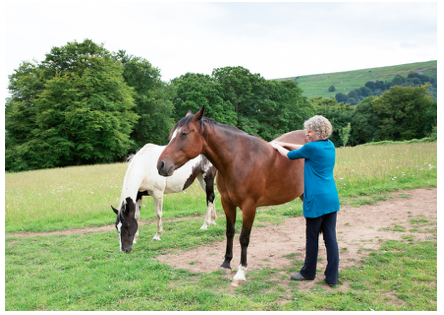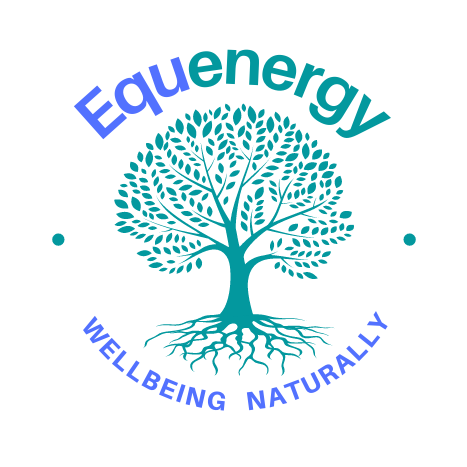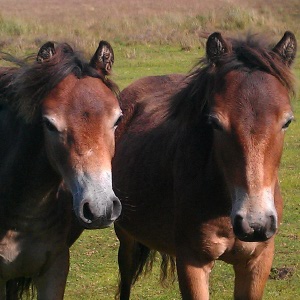May 2021
Why Calendula Is Worth Looking At For Your Animal's Natural Health
31/05/21 17:32
How Your Pet Can Enjoy Natural Calendula For Health
Bright and colourful, calendula officinalis is a member of the sunflower family. It's found growing in many parts of the world, and is also known as ‘pot marigold’.
So what does calendula share with aspirin?
Aspirin contains the analgesic salicylic acid. This is also found in the leaves and stems of the calendula plant!
But it’s flower of the calendula that’s most often used.
Why use calendula with your animal?
Externally
- Wound healing
- Skin irritations such as eczema, insect bites or rashes
- Relieve pain and inflammation
Internally
- Soothe digestive tracts
- Help lymphatic drainage
- Aid in liver function
- Calm
What's The Evidence Of Using Calendula In Animal Health?
Yes there has been veterinary research to see if calendula can help. Including:
- Medicinal plants as therapeutic options for topical treatment in canine dermatology? A systematic review (BMC Veterinary Research, 2019)
- Efficacy of Calendula officinalis for large open wound in animals (Veterinary Surgery and Radiology, 2019)
Can Calendula Help With Equine Gastric Ulcers?
As calendula contains saponins. It’s thought to help with healing and preventing gastric ulcers. And this research "pHyloGASTRO® in the treatment of Equine Gastric Ulcer Lesions" (University of Perugia, Italy, 2017) shows it as one of the ingredients in this natural supplement.
How Can You Use Calendula With Your Pet?
As a tea - use dried herbs with some boiling water. When it’s “steeped” and is cooler, strain the calendula from the water. Put the clear calendula tea into a spray bottle and use as a spray on your dog’s coat to relieve itching.
With a tincture - add a few drops to water in a spray bottle for the coat.
Use a liquid tincture to put some drops onto your animal’s feed.
How Safe Is Calendula For Your Animal?
It’s safe for many animals EXCEPT internally for pregnant animals or cats. If animals have the chance to roam in a field where calendula grows, many will seek it out - for instance goats and sheep.
Is It Possible To Use Calendula as Veterinary Homeopathy?
Yes! It’s used as a homeopathic remedy for skin conditions, and also to help with dental issues
Where Can You Buy Calendula For Your Horse, Dog Or Other Animal?
Many skin products or health supplements contain some calendula. But for best results of it, buy either the straight herb or tincture. Or a product where it is one of the main ingredients. For instance specialist pet health companies like Dorwest Herbs or Hilton Herbs both supply calendula. With it as a main (or sole) ingredient.
Like help finding a veterinary surgeon or therapist for your animal?
Please email me at info at taranet . co. uk
Please remember that if your horse, dog or other animal is unwell. Or on any kind of medication or other supplement. Then always speak to your Veterinary Surgeon first before using any supplement or therapy. Even natural ones. To avoid any possible issues.
And do you know someone who'd find this helpful? Please share, the more we can spread awareness of the benefits of natural therapies the better! :)
Find out more about other natural animal therapies here at Taranet. Or read other articles in this Natural Pet Health Blog. Take a look at the sitemap here to explore!
Exciting News About This Natural Pet HealthCare Blog
It's been selected by Feedspot as one of the Top 10 UK Animal Blogs on the web. Check out this here
About the Author
Suzanne Harris is an equestrian and canine entrepreneurial coach and consultant to veterinarians who want to help prevent animals being affected by domestic abuse.
How The Natural Benefits Of Zoopharmacognosy Can Help Your Animal
18/05/21 18:35
Learn How Zoopharmacognosy Can Help Your Animal
by Siobhan Pestano, Zoopharmacognosy Practitioner
What exactly is zoopharmacognosy and how can it help my horse, dog, or other animal?
This strange and unpronounceable-looking word refers to animals’ innate ability to self-select different botanical extracts to support their wellness.
As this scientific term was originally coined for animal behaviours observed in the wild, the behaviours would generally have been demonstrated with fresh plants. However, companion and domestic animals also clearly demonstrate their natural affinity with self-selection - whether in an outdoor environment with fresh plants, or where a zoopharmacognosy consultation is facilitated by a human practitioner, bringing a much broader range of extracts to the table.
How does zoopharmacognosy work?
Self-selection is all to do with signalling between the animals brain and its nose. Animals have evolved utilising the medicinal constituents in plants, without over-medicating. How? One theory suggests that via electrical signalling, the brain alters the animal’s perception of the constituents of a plant (rather than the plant itself), increasing or reducing its appeal at the time of availability, and dependent on that animal’s needs at the time. As the animal “selects” the plant, clay or other compound, more signalling from the nose to the brain tells the animal when to cease, avoiding over-medication.
What kinds of herbal extracts can be offered to an animal?
That very much depends on the animal. As a zoopharmacognosy practitioner, my working kit is fairly extensive, comprising of the following:
- dried herbs & seaweeds
- powdered plants
- clay powders & mineral muds
- beeswax & aloe
- hydrosols
- essential oils & absolutes
- CO2 extracts
While a lot of these are potentially helpful to most animals, herbivores such as equines will show a much higher interest in dried herbs, whereas cats are at risk from potentially fatal kidney disease from the inappropriate use of essential oils.
Species-specific knowledge and and safe use is therefore paramount, which is why a face-to-face consultation with a qualified practitioner can be really helpful, informative and reassuring, helping both you and your animal in different ways. What a zoopharmacognosist won’t do, however is diagnose or “treat” your animal.
“How can my animal benefit from self-selecting botanicals?”
You can use zoopharmacognosy to support your animal in a number of different situations:
- Preventative Wellness: routinely making extracts available to your animal periodically, so that they can eat, lick or inhale botanicals to keep them as close to homeostasis as possible. If the things you make available to them are not required at that time, they will simply ignore them. It might look ungrateful, but that’s self-selection in action, and that choice is exactly what’s needed.
- Acute health challenge support. Please note - zoopharmacognosy should never be treated as a substitute for veterinary care, but can really help support overall wellness during times of challenge. If your animal is under veterinary care, it’s essential to discuss with your vet what extracts or nutrients may be offered, to avoid any risk of contra-indications.
- Chronic health challenge support: eg arthritis. You’re not going to “fix” such a challenge, but giving your animal access to natural support (whether nutrients, anti-inflammatories etc) can help reduce the frequency with which strong allopathic medication is needed. Such medications can be very helpful when needed, but routine long-term use carries the risk of side effects, so reduced reliance is ideal.
“So… it’s all about letting them eat what they like? My animal is greedy!”
No - it’s not about that at all. A lot of self-selection therapy takes place simply by the inhalation of aromatic essential oil molecules, which can have a profound effect. However, when we are talking about animals selecting by mouth, it’s important to remember that things like dried plant powders are secondary metabolites - in other words, they are being selected as medicine, not food (which is primary metabolites). The selection process for food and medicine is very different, which is why your horse or dog will not eat everything that it’s offered - truly.
Dried herbs, powders etc are always offered individually, not mixed together, as combining them makes self-selection impossible. Therefore, although it’s very typical in our current culture of care for us to “helpfully” mix or try to disguise supplements or medicines that we have decided are good for them, into their food - this is another thing that a zoopharmacognosist will not do, or advise you to do. Mixing herbal extracts into an animal’s regular feed takes away their natural ability to “choose or refuse”, which is the cornerstone of zoopharmacognosy.
What is so special about zoopharmacognosy as a therapy?
The thing I love most about it is it’s potentially profound effect on behaviour - I think it is entirely reasonable to say that zoopharmacognosy is uniquely helpful in this regard. Time and time again I have loved seeing animals that are on “death row” in rescue centres due to extreme fear-aggression reveal a whole different personality once they have had access to botanicals which have helped balance an overload of excitatory signalling - often with historic trauma.
I have been delighted to see the changes it has brought about in animals with “mystery” issues - by this I mean; they have had a thorough veterinary check-up & tests, with no visible causal indicators for a physical or behavioural challenges which is presenting. But after access to a wide range of botanicals - a huge improvement, sometimes instant!
It is a genuinely holistic therapy. By offering support for the multiple aspects of any single health challenge (pain, fear, over-anxiety, anxiety manifesting in stomach, nutrition, inflammation, loss, grief, infection, wound-healing, nausea, frustration and so on…) it can really help bring the animal back into balance.
It demonstrates just how brilliant animals are at helping themselves to wellness - if only someone would ask them what is needed, rather than deciding for them. It is gentle and can be absolutely transformative.
Can I do this myself, or do I have to use a practitioner?
I would always recommend either:
- seeing a practitioner face-to-face at least once
- having an extended phone or zoom consultation with a practitioner
- going on a course where you can learn how to support your own animals
There’s a lot to take in - from the properties of different extracts, how to work with different species, contra-indications, animal signals, what to offer, how to offer it, and more. I think confidence is key, which is why, when I see clients, I am rarely with them for less than three hours. I want to empower them to feel confident in supporting their own animals once I’ve left, with a much better understanding of what’s happening, what they’re looking for, how to offer - or how not to offer, this or that. It’s all part of the service, part of natural animal wellness work which is both endlessly fascinating and totally heartwarming.
About The Author
This is a guest post by Siobhan Pestano, Zoopharmacognosy Practitioner based in Somerset, U.K.. For more information please visit www.naturalanimals.com
REFERENCES
Costa-Neto, E., M. (2012). Zoopharmacognosy – The Self-Medication Behaviour of Animals [Online] Interfaces Científicas - Saúde e Ambiente Aracaju Vol 01 N.01 p. 61-72 . Available at: https://periodicos.set.edu.br/index.php/saude/index . Accessed 28 October 2012
Engel, C. (2002a). Wild Health – How Animals Keep Themselves Well And What We Can Learn From Them. London: Orion Books Limited
Huffman, M.A. (1997). Current Evidence for Self-Medication in Primates:
A Multidisciplinary Perspective. Yearbook of Physical Anthropology 40:171–200
Ingraham, T.H. (2011b). Zoopharmacognosy and Herbal Pharmacology. Bristol: T.H. Ingraham
© Natural Animals. Guest Blog (text & photographic) for Social Media & Website exclusive use by Taranet only, no syndication rights
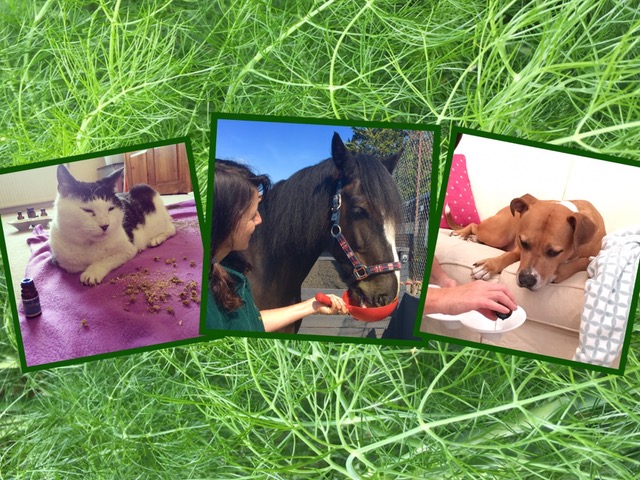
How To Help Your Animal's Health With McTimoney Chiropractic
16/05/21 12:53
What is McTimoney Animal Chiropractic and How Does it Work?
My name is Emily Walters BSc (Hons) PGDip Animal Manipulation and Equine Body Worker from McTimoney Animal Therapy. I have been treating horses and dogs for 14 years and I’m lucky to say I have one of the best jobs in the world. It’s the best feeling when an owner brings an animal to me in pain and discomfort knowing that very soon I can
relieve their pain and restore them to their normal selves.
McTimoney is a very gentle form of chiropractic. I use only my hands to treat your animal and most animals readily accept the treatment. I will feel down your animal’s spine and in the hindquarters looking for signs of pain, discomfort, tension and fixated joints. Joints are fixated when they become stuck at an extreme point of their range of movement due to muscle tension, placing pressure on the spinal nerves and creating dysfunction in the part of the body the nerve effects. This can also be called a misalignment or subluxation.
The chiropractic adjustments are high velocity, low amplitude thrusts to very specific anatomical points that encourage the muscles and tendons that support the joint to relax, allowing the joint to return to its full range of motion, restoring functionality and reducing pain and discomfort.
All professional animal therapists require veterinary approval to work on your animal. This is a stipulation of my insurance and membership to my professional body, the McTimoney Animal Association, and a permission form will have to be filled out by your vet.
How Do I Know If My Animal Needs a McTimoney Chiropractic Treatment?
There are several signs you can look out for that will tell you if your animal needs a treatment:
- Change in behaviour
- Drop in performance
- Conformation
- Lameness
- Accident or injury
- Loss of Condition
What to Expect From a McTimoney Chiropractic Treatment
If neither you or your animal have had a McTimoney chiropractic treatment before you might be wondering what to expect. Here are the steps I will:
- Take a full medical history and details of your animal’s current problems on my record card.
- Visually assess your animal, looking at conformation and symmetry.
- Perform a dynamic assessment watching your animal move
- Put my hands on your animal, feeling along the spine looking for fixations, areas of muscle tension, pain and atrophy. I may also perform some neurological tests.
- Start the McTimoney chiropractic treatment.
- Finish with some massage and stretching.
- Give you some detailed aftercare exercises and advice.
- Forward the record card to you so you have details of your animal’s session and aftercare.
What to Expect After a McTimoney Animal Chiropractic Treatment
Your animal will most likely be tired for the rest of the day. I always recommend a few quiet days after a session, so if your horse has had a McTimoney Equine treatment then this is a few days off from being ridden. If your dog has had a McTimoney Canine treatment then this will be quiet lead walks for a couple of days with no playing, jumping or running as much as possible.
It’s important to follow the aftercare I give you as this will help your animal in between sessions.
Your animal will be booked to have a followup session about 10 days later. At this point we will devise a schedule of treatments for the benefit of your animal and then draw up a maintenance schedule. This varies from animal to animal depending on the severity of the problem, how long they have had it, their age and any underlying issues they may have.
If you would like to find out more please contact me on 07983565438 or drop me a message through my website.
About The Author
This is a guest post by Emily Walters McTimoney Animal Therapy and Equine Sports Massage Practitioner
m: 07983 565 438
a: Pershore, Worcestershire, WR10 1JX
w: www.mctimoneyanimaltherapy.co
e: emily@mctimoneyanimaltherapy.co
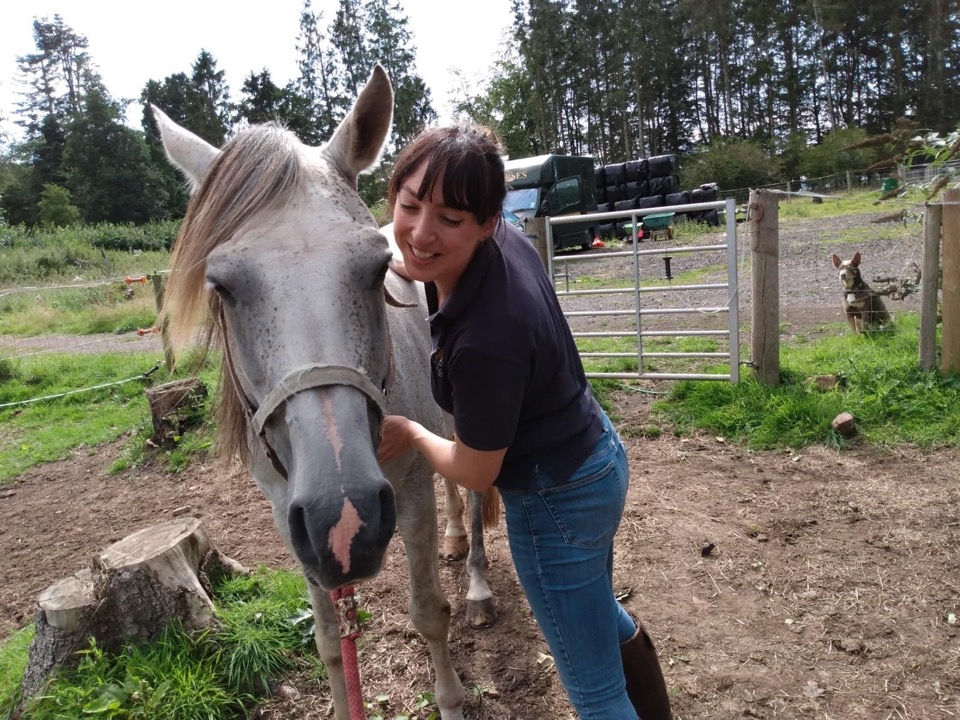
Learn How Magnesium Can Help Your Pet's Health
10/05/21 22:13
Do you know the benefits of Magnesium for pets?
Magnesium is needed to support over 350 biochemical processes in the body. This is due to Magnesium's primary role as an enzyme co-factor. Magnesium is essential for nerve and muscle function.
Magnesium can be used as a soaking solution to relieve minor sprains, bruises, muscle aches, discomfort, joint stiffness, and soreness. You may be more familiar with Epsom salt. Dr. Milt's Magnesium Topicals are "USP grade Epsom Salt in a bottle."
Transdermal application of Magnesium can help increase blood flow to the muscles and soft tissue. It enhances muscle strength, endurance, and relaxation. Dr. Milt's Magnesium Topicals relieve the ailments associated with magnesium deficiency.
Animals deficient in Magnesium can be nervous, excitable, and have muscle tremors. Our pets may show signs of Magnesium Deficiency. Magnesium is one of the most neglected minerals in pet food. Consuming processed foods has led to our pets having less than the daily recommended allowance of Magnesium.
Applying topical Magnesium is the best and easiest way to improve pet health. The Magnesium soaks directly into the skin and fur. You can also treat specific areas of your pets’ body.
Case Study Of How Magnesium Helps Pets
Here is a firsthand account of how Dr. Milt's Magnesium Topicals can benefit your pet.
"I am a dog walker in Philadelphia, PA. I have been caring for Matilda for three years. When I first started walking her, I noticed she would stretch and not use her back right leg. I asked her mom if something was wrong. She told me about the surgery she had when she was a pup.
Matilda dislocated her hip multiple times when she was 1-2 years old. Her mom decided to go ahead with a femoral head ostectomy. FHO is a surgical procedure aiming to restore pain-free mobility to a damaged hip by removing the femur's head and neck (the long leg bone or thighbone). In this surgery, the joint's ball is removed, resulting in a false joint supported by soft tissue to relieve painful bone-on-bone contact.
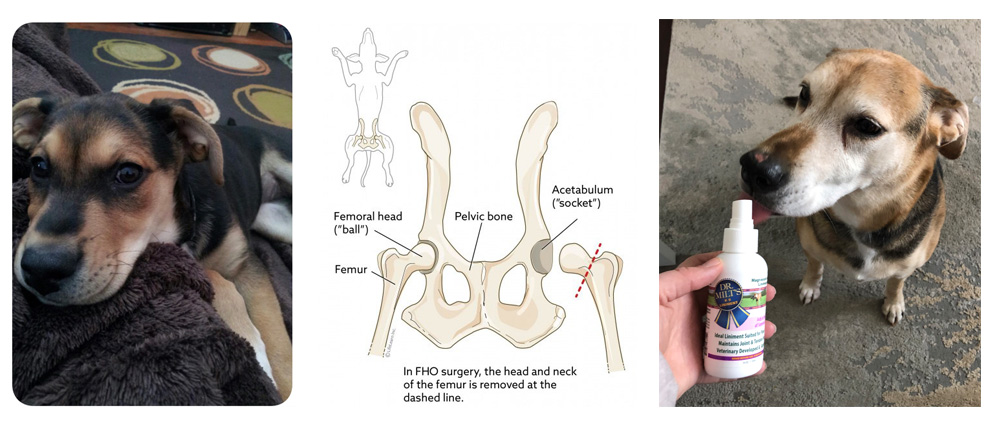
After the surgery, her back right leg was shorter than the rest. She refused to use that leg and was hopping around three-legged. Matilda went through many months of physical therapy to get her comfortable using that leg again. (Underwater treadmill, regular treadmill, slowly walking up hills and stairs, obstacle courses, and cavaletti) Cavaletti is an Italian word meaning "little horse." Equine trainers developed this training of stepping over varying placed poles for horse conditioning.
She eventually gained full functionality of that leg, and for the most part, you'd never know it happened. Matilda can run a few miles with her mom, enjoy long hikes, play with other dogs, and has a normal active life.
I didn't think much about her leg issue until I started using Dr. Milt's Magnesium Topicals on myself and my pets.
She's 8 now, and generally, she gets around great. As she has aged, when she plays too hard, the back right leg gives her problems. 2 weeks ago, she started showing signs of discomfort in that leg. I called her mom and asked if anything happened. She told me she was playing over the weekend and was having some problems with that leg. I asked her if I could apply Dr. Milt's Magnesium K9 Spray on Matilda's leg. She said yes. Now every day I walk her, I give her a Dr. Milt's massage.
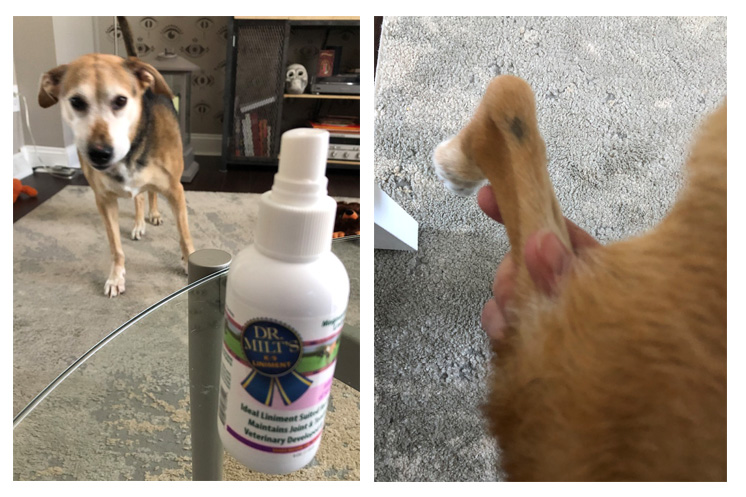
You may want to know if Dr. Milt's K9 spray works. I know it helps Matilda because she lets me know that she wants a massage by lifting her back leg every day before our walk.
Last week we had a snowstorm. Matilda could not get up the basement steps. She lifted her leg to show me where her pain was. Before we went for a walk, I could tell she wanted a Milt's massage. I sprayed Dr. Milt's on her leg and rubbed it in. Afterward, we went for a long walk, and she played in the snow. Matilda walked longer than we had in months. She rolled around in the snow and seemed to not be in any discomfort."
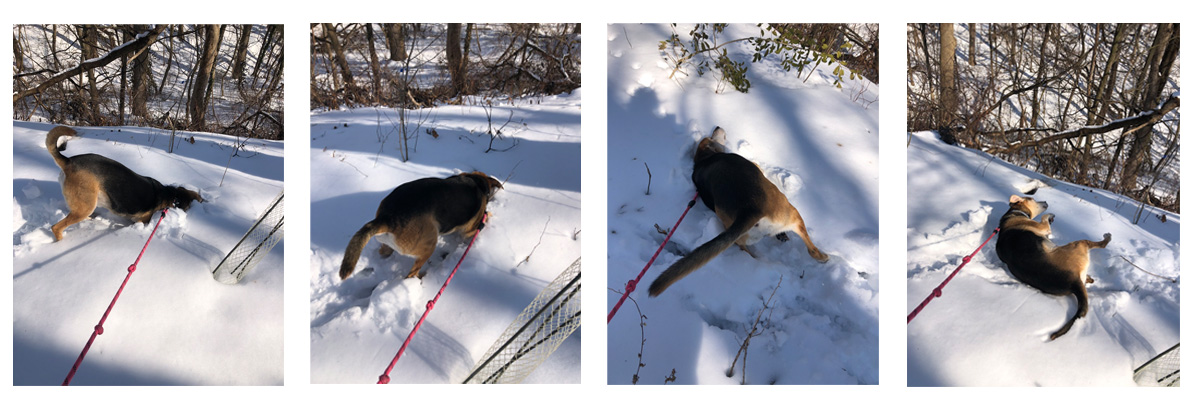
Dr. Milt's Magnesium Topicals helped Matilda with her joint pain and discomfort. Magnesium can benefit your pet for pain relief and their overall health.
Health Benefits of Magnesium:
- Overall body health and calmness
- Improves heart and circulatory health, reduces irregular heartbeats, prevents hardening of the arteries, reduces blood clots, and lowers blood pressure.
- Enhances the ability for the body to use insulin, reducing the incidence or severity of diabetes.
- Toxins and heavy metals are flushed from the cells, easing muscle pain and helping the body to eliminate harmful substances.
- Boosts nerve function by regulating electrolytes. Calcium is the primary conductor for electrical current in the body, and Magnesium is necessary to maintain proper calcium in the blood.
- Magnesium is a natural stress reliever. Excess adrenaline and stress drain Magnesium from the body.
- Reduces swelling, relieves pain and muscle cramps.
- Absorption of nutrients is enhanced, and systemic oxygen use is improved.
- Benefits the formation of joint proteins, brain tissue, and mucin proteins.
- Injuries are decreased by providing support to liniments and tendons.
Dr. Milt's Magnesium Topicals Features & Benefits:
- USP Grade Magnesium Sulfate blended with Arnica, Wintergreen EO, and Witch Hazel.
- Made from all-natural ingredients that promote health.
- Soaks into skin and fur. Dries Clear and Leaves no greasy or messy residue.
- Conditions joints for increased mobility.
- Safe to use under wraps to improve the blood supply to the area of injury or soreness.
- Can be used in conjunction with ceramic and magnetic wraps
- Aids in restoring stressed & overworked muscles.
- Moisturizing and healthy for the skin.
- Available in Spray, Gel, Cream, & soaking crystals.
By now you should be interested in learning more about Magnesium and its benefits. You may also want to know if Dr. Milt’s Magnesium K9 Topicals can help your pet.
Scan to claim your 50% off Coupon!
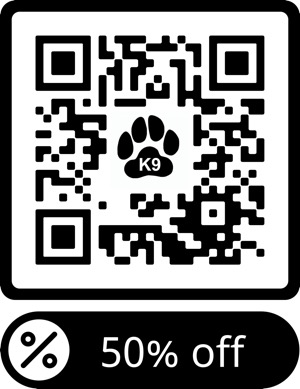
How To Buy Magnesium For Your Pet?
- For more information and to purchase Dr. Milt’s, visit their Linkedin and Facebook. Or visit Dr Milt's website here. Dr. Milt’s is not just for Pets. It can also benefit your Horse and You!
- Other leading natural animal healthcare suppliers also sell products containing magnesium, such as Hilton Herbs and Dorwest Herbs.
About the Author
This is a guest article created by Dr Milts
Like help finding a veterinary surgeon or therapist for your animal?
Please email Suzanne at info at taranet . co. uk
Please remember that if your horse, dog or other animal is unwell. Or on any kind of medication or other supplement. Then always speak to your Veterinary Surgeon first before using any supplement or therapy. Even natural ones. To avoid any possible issues.
And do you know someone who'd find this helpful? Please share, the more we can spread awareness of the benefits of natural therapies the better! :)
Find out more about other natural animal therapies here at Taranet. Or read other articles in this Natural Pet Health Blog. Take a look at the sitemap here to explore!
How Energy Can Help Your Horse Feel Great
03/05/21 17:14
Could your horse benefit from some energy TLC?
If the last year has taught us anything, it’s that looking after our wellbeing is so important. There are a variety of aspects to this, for example nutrition, movement and rest, addressing any stresses that we’re experiencing and creating the environment that allows us, as an individual, to thrive.
This is no less true for the animals we care for.
So, what does this look like when we’re thinking about horses?
If your horse is showing signs of:
- a lack of energy
- dull coat
- behavioural issues
- chronic health niggles
My focus is on energy, in all its different forms. I believe that when our energies are balancing in a supportive and uplifting way, then we will naturally experience wellbeing.
You might have noticed that I said ‘balancing’ rather than having ‘balance’. This is because I think that this is a dynamic process; a way of BEing, rather than something we do and then it’s ‘done’.
So, looking at the points I mentioned above:
- nutrition:
Each species has its own particular nutritional needs and individuals will have variations within this.
A horse’s gut has evolved over thousands of years to extract nutrients from a range of forage plants. They are very efficient at extracting this energy and so do best when the plants are not high in sugars.
It’s also good to remember that when feeding a horse, we’re actually feeding the bacteria in its hindgut.
And, like us, they do best on a diet that avoids overly processed foods and chemicals such as pesticides, herbicides and mould inhibitors. Nature really does know best, but we need to remember that we’re aiming for what a horse would be accessing in its most natural, wild environment.
- movement and rest:
In their wild habitat horses walk many miles each day in search of food and water. This supports their wellbeing by keeping them fit and allowing their hooves to act as ‘pumps’ circulating oxygen and nutrients and taking away waste products. Movement can also help to reduce stress if it allows the horse to feel able to escape from any perceived threat.
Rest is also essential, as this is when the body does any necessary maintenance and repair. It facilitates efficient digestion and also gives the horse time and space to process whatever they’ve been experiencing.
- addressing any stresses:
Here I think it’s essential to remember that stress is a very individual thing and so we need to view things from the horse’s perspective to understand whether they might find it stressful. Horses, like us, can become anxious and it can have huge impacts on their wellbeing.
- creating the right environment for the individual to thrive:
In my work I look at the whole environment in which the animal – or person – is living and explore where this is / is not working for them. I then use a variety of techniques to work with the individual, touching on each of the points above, to support the creation of a more supportive environment, both internal and external, which will allow them to thrive.
For a horse this generally brings back that spring in their step, the bright eye and shiny coat, strong hooves, healthy digestion and calm but interested temperament. This all means that they are a happier – and safer – animal, and that you will hopefully enjoy many happy years together.
If you’d like to know more I offer a free 20 minute initial consultation.
You can find my website at https://equenergy.com and there is a links list that can take you to my social media, YouTube and podcast accounts.
If you’d like to learn more about how I support people in creating greater wellbeing for themselves, I invite you to visit my website and find 4 simple steps to shifting yourself into a more uplifted energy, and stay there.
About The Author
This is a guest post by Robyn Harris who is the founder of EQUENERGY: Wellbeing Naturally. She describes herself as a Soul Alignment Mentor, believing that ‘a mentor is someone who allows you to see the hope inside yourself’ – Oprah Winfrey.
Having known what it’s like to feel stressed, ill and overwhelmed, she is passionate about holding a safe and nurturing space in which to intuitively and gently inspire others to reconnect with their sense of joy, purpose and love of Life through re-membering, Who They Really Are at the very core of their BEing. She also believes in the importance of doing this in a light-hearted, uplifting, person centred way, and of making it fun!
She feels it's so important to understand how our thoughts and beliefs impact on our wellbeing, and how our bodies respond to these and to the world around us. Having this knowledge enables us to make the choices that will best support our wellbeing. A few years ago, as part of her own journey to greater soul alignment and wellbeing, Robyn moved to Wales with her husband and now lives in a beautiful rural setting near Abergavenny.
Working from a very holistic perspective, she believes that we can draw a lot of wisdom from the natural world, and from the animals who share our lives. She therefore also offers the opportunity to experience the healing of the magical space at Equenergy and, for those who feel drawn to it, of the energy of her amazing equine partners Dakota (Dax) and Rika.
